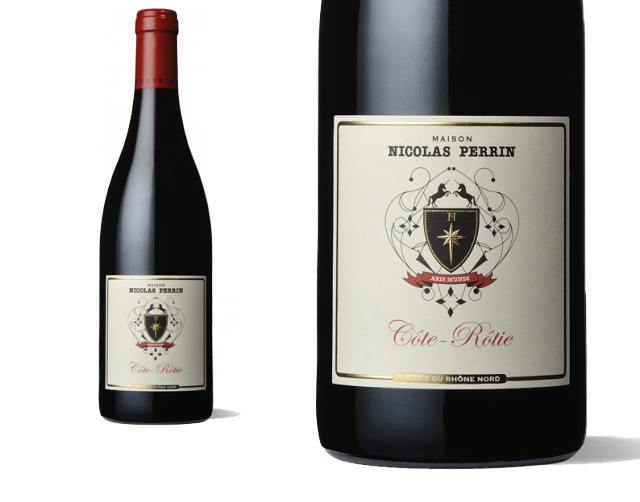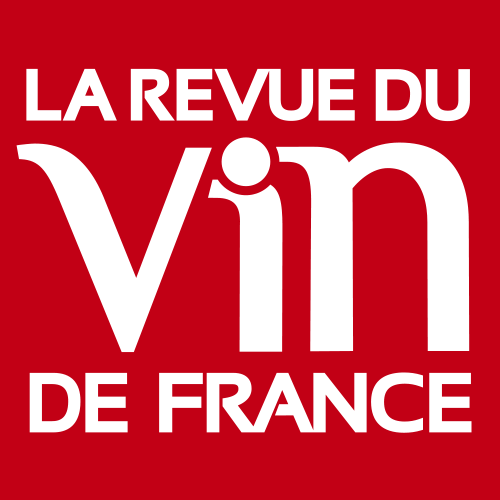
Maison Nicolas Perrin Côte-Rôtie Rouge - 2007
History has it that vines were planted here centuries ago. Two thousand years ago the Latin authors Martial, Pline l’Ancien, Columelle and Plutarque called the wine from Côte Rôtie “Vin Viennois”.
During the Middle Ages and Renaissance, the reputation of the wines from Ampuis just grew bigger. Before the revolution wines from Côte Rôtie were sent to Royal tables around the world; England, Russia, Prussia and France. The vineyard reached its peak in 1890. Every inch of sunny hillside was planted with vines. At this time, the outbreaks of Phyloxera and other diseases didn’t demotivate the winegrowers. Unfortunately World War One will ruin all their efforts. Over 150 men were sent to war and the vineyards were abandoned. It is only in the sixties that the vineyard was attended again.
The vineyard of Côte Rôtie is located on the hills of the right bank of the Rhône river. Some of the slopes exceed 60%. The vineyard is located at an altitude ranging between 180 and 325 metres and is composed of 73 localities.
The main stone is granite covered in places by schist but also sand and calcareous soils.
For the most part, our wine comes from the southern part of the appellation; Côte Blonde and Coteau de Tupin. We wished to make wines with great distinction but also with elegance and finesse rather than wines from the north that tend to be harder and more powerful.
The weather in 2007 was intermittent with periods of cold and wet weather and high temperatures. Even if the flowering was premature due to an unusually warm month of April, harvest actually started later than originally forecasted back in July. The summer was slightly cooler than usual and the sun was timid. The sampling mid-August finally showed late maturity. As from August 20th we had high temperatures with plenty of sunshine and this throughout the month September. This allowed for a slow and progressive maturity of the grapes up until harvest around September 12th.
The vineyard of Côte Rôtie is located on the hills of the right bank of the Rhône riverto the north and south of the village of Ampuis. Some of the slopes exceed 60%. The vineyard is located at an altitude ranging between 180 and 325 metres and is composed of 73 different localities.
The grapes are cold-macerated before being fermented to increase the aromas of fruit. Maceration and fermentation for about 20 days with pumping-over for the first few days followed by punching-down. Ageing in 1-year-old barrels for 15 months.
The dark colour shows a good concentration.
The nose is a bit closed when first opened but after airing, aromas of black fruit and spices appear.
The mouth is silky, elegant and very flattering. The finish is long and shows that the wine has plenty of life in it.
Currently this wine needs to be decanted at least an hour before serving.
Drink in it’s youth: Slow roasted lamb will be a great match for this wine.
Cette toute jeune maison de négoce est née de l’association de la famille Perrin (du Château de Beaucastel à Châteauneuf-du-pape) et de Nicolas Jaboulet (ex-directeur de la maison familiale Paul Jaboulet et Fils). Deux grandes pointures du sud et du nord de la vallée, qui sortent une petite collection de crus du nord. Les vins sont sélectionnés sur fûts avant fermentation malolactique chez les vignerons et les élevages sont ensuite terminés chez Perrin, près d'Orange. Puis suit un travail d’assemblage. Les premiers vins sont encourageants.
Les vins: 100% négoce, sans aucun vignoble mais un grand savoir-faire de la sélection, ils expriment un fruité très franc et l'élevage ne corsète pas les jus. Les cinq premiers vins sont tous précis dans la définition attendue des terroirs. Le Côte-Rôtie est tout en finesse, on y décèle plus le coté fin de la Côte Blonde. Bravo. Nous avons hâte de déguster les prochaines sélections !
Guide de la Revue des Vins de France
, 15,5
, 2010-10-01

Dark and alluring, with inviting crushed black currant,
blackberry and black cherry fruit that's liberally
laced with mouthwatering black tea, incense and maduro
tobacco notes. The long finish has nice grip. Big
and mouthfilling, especially for the vintage. Drink now
through 2018. 580 cases made.
James Molesworth
Wine Spectator
, 92
, 2010-10-01

Their adventure should have been called “Jaboulet-Perrin” or “Beaucastel-La Chapelle” but when the family business is sold by one of the partners and bans them to use their patronymic, they came up with “Maison Nicolas Perrin”. This young negociant company is therefore the partnership between two major heirs : Nicolas Jaboulet (ex Director of Maison Paul Jaboulet & Fils) and Marc Perrin (Château de Beaucastel in Châteauneuf du Pape). In 2008 these two men from the Rhône Valley get together to mature and sell wine. Their mission is to locate quality plots of Syrah, create partnerships with the winegrowers and follow the winemaking process. The wine is barrelled at the winegrowers and then blended and aged in the Perrin cellars near Orange. Marc blends and Nicolas manages the sales and administration. They are very selective and only work with a dozen of barrels (35 000 bottles in 2010). Bring on the next selections !
A. Gerbelle
La Revue du Vin de France
, 2011-01-01